#duchess of bari
Text
Femslash February, day 19
A new ship: Bary Cormorant/Tain Hu (The Traitor Baru Cormorant)
I have no official pics, so here are links to some cool fanarts!
But well. I love tragedy and hard choices. I think it's a condition to appreciate them. Every line of their last scene together made me scream. It's not a new book! But I only read it less than 2 months ago.
2 notes
·
View notes
Text
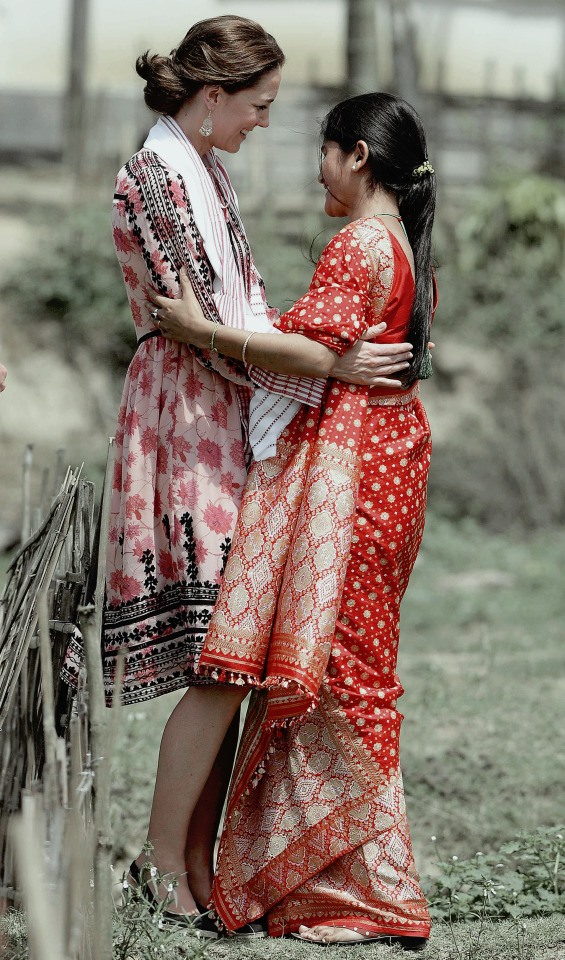

The Duchess of Cambridge visits Pan Bari Village in India’s Kaziranga National Park | April 13 2016
36 notes
·
View notes
Text

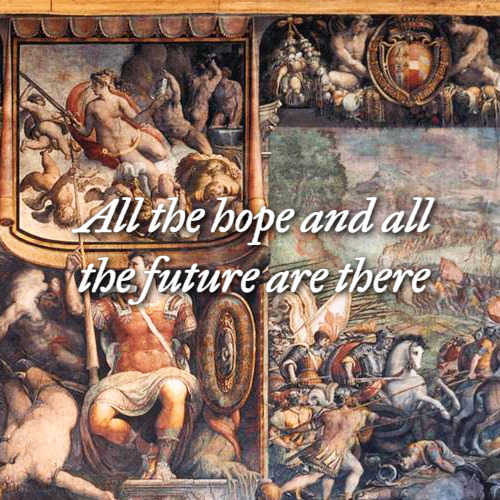
THE ROYAL BAPTISM AT THE PALAZZO FARNESE
Rome, 29 December 1869
I have just left the Farnese Palace, and I really believe that one can say without exaggeration: Naples is no longer in Naples; it is all in Rome today.
It is doubtful indeed that, even in the middle of his capital, Francis II would have seen himself surrounded by a crowd more numerous and better representing, not only the elite, but all the ranks of the nation of which he is the legitimate sovereign.
Certainly more magnificent pomp could have shone in Naples around the royal cradle. But first of all, could the young princess have hoped to have more august godparents before God and at her entry into the Christian life? The Holy Father, the first and greatest of the world's monarchs, the very Vicar of Our Lord Jesus Christ, and in whom the crown of suffering and misfortune heroically borne is added to the majesty of the tiara and the halo of sanctity; The Empress of Austria, who occupied the throne of the Habsburgs and whose sister was that great and pious Queen whom the people, anticipating in some way the judgment of the Church, like to proclaim "the Saint".
(...) The birth of the princess was a universal joy in the kingdom, and for two or three days hundreds of the most eminent people flocked to Rome. At the same time all the trains brought deputations chosen by each province and which the Piedmontese government allowed to pass, for want of being able to oppose a movement which was the expression of popular feeling.
From noon onwards, the vast halls of the Farnese Palace, which is one of the wonders of Rome and has few rivals in Europe, were filled with an enormous audience, composed almost exclusively of Neapolitans. Hardly the Senator of Rome and some Roman princes had been invited. The King, who, like all Bourbons, identifies his family with his country, had wished to be surrounded, with very few exceptions, only by his subjects and servants.
(...) With a delicacy worthy of his great heart, the King had asked the Bishops of the monarchy present in Rome to abstain from appearing at the ceremony: it was not necessary that a mark of religious fidelity should excite against the Episcopate of Naples the passions already so violent of Unitarianism and of the Revolution. On the other hand, fourteen Cardinals had come to pay homage to the majesty of right and wrong.
The number of young men mixed with the defenders who had been whitened in the service of the monarchy was particularly gratifying. After so long an exile, and in the midst of the temptations and seductions which are not spared, the presence and confidence of this generation, which is only just being born into public life, is a most favourable omen. Tradition is perpetuated, and hereditary devotion offers the Crown renewed phalanxes.
All the hope and all the future are there.
The Holy Father was represented by Cardinal Antonelli; the Empress Maria Anna, the godmother, was represented by Her Majesty the Empress [Elisabeth] of Austria, brilliant in beauty, grace, elegance and dignity. The procession of the princes was composed of H. M. the King of the Two Sicilies, H.R.H. the Duke and Duchess of Parma, H.I.H. and RR. the Grand Duke and Grand Duchess of Tuscany, H.R.H. the Count and Countess of Caserta, the Count and Countess of Girgenti, the Duke and Duchess of Alençon, the Duke of Bari and Princess Maria Immacolata, the Count and Countess of Trapani, the Prince their son and the two Princesses their daughters, the Prince of Hohenzollern.
The altar stood in the room decorated with the magnificent paintings of Salviati.
The young princess was carried on the arms of the Duchess of San Cesario. It was a touching honour for the illustrious and courageous Grand Mistress of the Palace, whose name is inseparably linked to that of the heroine of Gaeta and who deserved to receive the medal of that forever memorable siege; it was a touching honour for her to hold before the sacred font the royal child whose birth has just thrown a lightning bolt of happiness on the fortunes she has nobly shared.
S. Cardinal Patrizi performed the ceremonies and gave the young princess the names of Christina-Pia-Maria-Anna-Elisabetha-Natalina-Ephisa. The Neapolitan nurse in the magnificent costume of the women of her country, from the mountains of Avellino, was noted with interest near the font. These national clothes had a charm and a high significance in the midst of the brilliant finery of the great ladies and the insignia of the court figures.
The princess carried the magnificent christening gown, made of white lace, a gift from three hundred Neapolitan ladies, a masterpiece of taste and a guarantee of fidelity.
After the ceremony, the procession reformed. The Empress, the King, the Princes and Princesses went to the salons. The new Christian was brought to her august mother, whose emotion was deep. The Queen, with tears in her eyes, instructed the Duchess of San Cesario to thank all the faithful Neapolitans who had given, on this occasion, proof of a devotion that survives time, trials and persecutions. The Queen's emotion was so strong that duchess had to withdraw so as not to prolong its duration.
And, in fact, nothing honours a people and touches the hearts of sovereigns like these testimonies of a constancy above all perils, all perils and all sufferings.
The King was radiant with happiness. After ten years of proscription and in the midst of the joys of fatherhood, to find near him the servants who had been the companions of his misfortunes; to see a new generation rising up in the cult of right and duty; to receive the wishes of an entire people who aspire to become free again and to reconquer their nationality and their dynasty: what a consolation, and above all what hope!
Here, then, is at last a dawn of prosperity rising over the House of Bourbon and the kingdom of Naples! It is the harbinger of an even more beautiful day; it is the sign of a forthcoming triumph of good Law and Justice.
De Riancey, Henri (1870). Lettres sur Rome (Translation done by DeepL. Please keep in mind that in a machine translation a lot of nuance may/will be lost)
#this man was more optimist about the future of the bourbons than the bourbons themselves#the pictures are the salviati paintings in the palazzo farnese that de riancey mentions btw!#princess maria cristina of bourbon-two sicilies#queen marie sophie of the two sicilies#francesco ii of the two sicilies#empress elisabeth of austria#house of bourbon-two sicilies#on this day in history#long post
6 notes
·
View notes
Text
BEATRICE D’ESTE // DUCHESS OF BARI & MILAN
“She was Duchess of Bari and Milan by marriage to Ludovico Sforza (known as "il Moro"). She was one of the most important personalities of the time and, despite her short life, she was a major player in Italian politics. A woman of culture, an important patron, a leader in fashion: alongside her illustrious husband she made Milan one of the greatest capitals of the European Renaissance. With her own determination and bellicose nature, she was the soul of the Milanese resistance against the enemy French during the first of the Italian Wars, when her intervention was able to repel the threats of the Duke of Orléans, who was on the verge of conquering Milan.”


1 note
·
View note
Photo
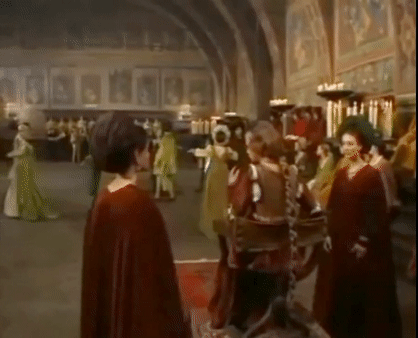



THE DEATH OF BEATRICE D’ESTE
3 January 1497
On Monday, the 2nd of January, the Duchess Beatrice drove in her chariot through the park of the Castello and along the streets of the city to the Porta Vercellina and the Church of S. Maria delle Grazie, where even then Leonardo was at work upon his great fresco. In the eyes of the people who saw her pass, she seemed in excellent health, and returned their loyal greetings with the same gracious charm. But when she reached the Dominican church, and had paid her devotions at Our Lady's altar, and prayed for the repose of her daughter's soul, she lingered by the new-made tomb, rapt in sorrowful thought, and it was long before her ladies could persuade her to come away. After her return to the Castello that afternoon, there was dancing in her rooms in the Rocchetta until eight o'clock in the evening, when she was suddenly taken ill. Three hours later she gave birth to a still-born son, and half an hour after midnight her spirit passed away.
The duke's grief was said to be terrible. For some time he refused to see any one, and many days passed before even his children were admitted into their father's presence. But, with characteristic strength of mind, he sent for his secretaries that morning, and himself dictated the letters which bore the sad news to Beatrice's family at Mantua and Ferrara. In that dark hour the passion of his love and sorrow breaks through conventional formalities, and gives a touch of pathos to the brief message which he sent to Francesco Gonzaga:
"Most illustrious Relative and dearest Brother,
My wife was taken with sudden pains at eight o'clock last night. At eleven she gave birth to a dead son, and at half-past twelve she gave back her spirit to God. This cruel and premature end has filled me with bitter and indescribable anguish, so much so that I would rather have died myself than lose the dearest and most precious thing that I had in this world. But great and excessive as is my grief, beyond all measure, and grievous as your own will be, I know, I feel that I must tell you this myself, because of the brotherly love between us. And I beg you not to send any one to condole with me, as that would only renew my sorrow. I would not write to the Madonna Marchesana, and leave you to break the news to her as you think best, knowing well how inexpressible her sorrow will be.
Lodovicus M. Sfortia,
Anglus Dux Mediolani.
Milan, January 3, 1497, 6 o'clock."
Source:
Julia Cartwright, BEATRICE D'ESTE DUCHESS OF MILAN 1475-1497
66 notes
·
View notes
Text
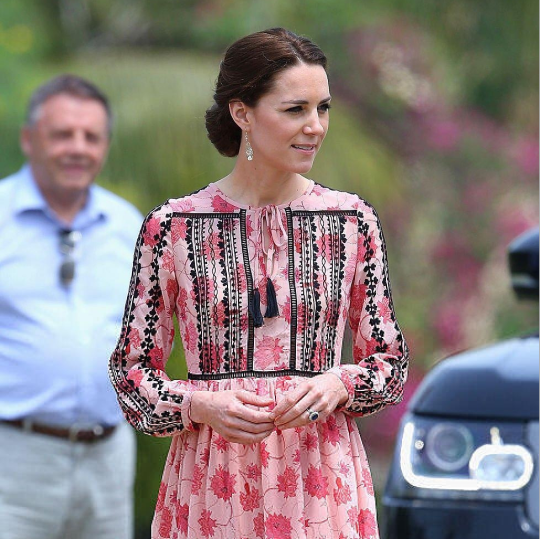

CATHERINE'S STYLE FILES - 2016
13 APRIL 2016 || The Duchess of Cambridge along with Prince William visted Pan Bari village, Centre for Wildlife Rehabilitation and Conservation and Kaziranga Discovery Park on their fourth day while on tour of India and Bhutan.
#catherines style files#style files 2016#duchess of cambridge#catherine cambridge#pan bari visit#centre for wildlife rehabilitation and conservation visit#kaziranga discovery park#elephant family#british royal family#british royals#brf#british royalty#catherine middleton#kate middleton#royalty#royals#royal#royal fashion#fashion#style#lookbook#india and bhutan tour#day 4 india and bhutan tour#topshop.#imperia wedges#pied a terre.#accessorize.#filigree bead short drop earrings#mine.#13.04.2016
54 notes
·
View notes
Text
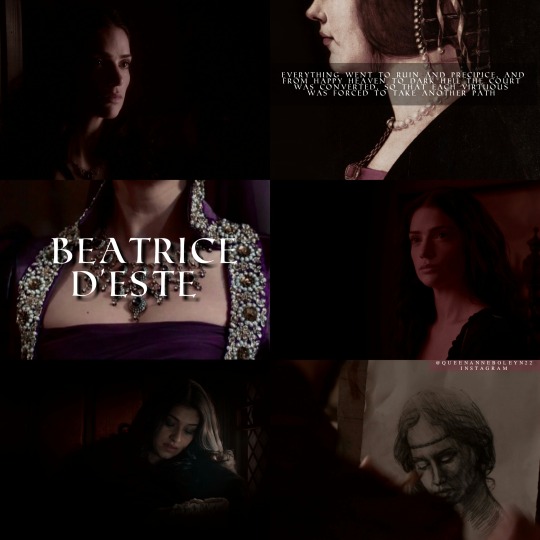
Beatrice d'Este (29 June 1475 – 3 January 1497), duchess of Bari and later of Milan, was the wife of the Milanese ruler Ludovico Sforza (known as "il Moro"). She was one of the most beautiful and accomplished princesses of the Italian Renaissance. A member of the Este family, she was the younger daughter of Ercole I d'Este and the sister of Isabella d'Este and Alfonso d'Este. Along with her sister, Beatrice was noted for her excellent taste in fashion and for having invented new clothing styles.
The Ferrarese house of Este and the Milanese house of Sforza had always been on friendly terms and in 1480, in order to cement an alliance, Ludovico Sforza formally asked Ercole d'Este to give him the hand of his daughter in marriage. Ludovico, who was then duke of Bari and regent to the duke of Milan, had originally requested a betrothal to Isabella, Beatrice's older sister, but because she was already promised to Francesco Gonzaga, Ercole offered him Beatrice instead. Il Moro made no objection to the arrangement and Beatrice was married to him in January 1491.The official nuptials were to have taken place in 1490 in a double wedding with Beatrice marrying Ludovico and Isabella marrying Francesco at the same time, but the Duke of Bari postponed it more than once. Finally, around a year later, they were wed in a double Sforza-Este wedding: Ludovico married Beatrice, while Beatrice's brother, Alfonso d'Este, married Anna Sforza, the sister of Gian Galeazzo Sforza. Leonardo da Vinci orchestrated the wedding celebration.
"A daughter was born this day to Duke Ercole, and received the name of Beatrice, being the child of Madonna Leonora his wife. And there were no rejoicings, because every one wished for a boy."
Beatrice had been carefully educated, and availed herself of her position as mistress of one of the most splendid courts of Italy to gather around her learned men, poets and artists, such as Niccolò da Correggio, Bernardo Castiglione, Donato Bramante, Leonardo da Vinci, and many others.In 1492 she visited Venice as ambassador for her husband in his political schemes, which consisted chiefly of a desire to be recognized as duke of Milan. On the death of Gian Galeazzo Sforza, Ludovico's usurpation was legalized, and after the Battle of Fornovo (1495), both he and his wife took part in the peace congress of Vercelli between Charles VIII of France and the Italian princes, at which Beatrice showed great political ability.
However, her brilliant career was cut short by death through childbirth, on 3 January 1497 at the age of 21. In a letter written hours after her death, Ludovico informed his brother-in-law Francesco Gonzaga that his wife, "gave back her spirit to God" half an hour after midnight. Their child had been born at eleven at night and was a stillborn son.
"And when Duchess Beatrice died," wrote the poet, Vincenzo Calmeta, "everything fell into ruin, and that court, which had been a joyous paradise, was changed into a black Inferno."
Beatrice d'Este belonged to the best class of Renaissance women, and was one of the cultural influences of the age; to a great extent, her patronage and good taste are responsible for the splendour of the Castello Sforzesco in Milan, the Certosa of Pavia, and many other famous buildings in Lombardy. Her tomb is preserved in the Certosa di Pavia where she is buried beside her husband Ludovico Sforza.
Her children by Ludovico Sforza:
-Massimiliano Sforza (25 January 1493 – 4 June 1530), duke of Milan 1512–1515.
-Francesco II Sforza (4 February 1495 – 24 October 1535), duke of Milan 1521–1535.
-Stillborn son (3 January 1497).
Source: "BEATRICE D'ESTE DUCHESS OF MILAN 1475-1497 A STUDY OF THE RENAISSANCE" BY JULIA CARTWRIGHT
"This duke had for his most dear wife Beatrice d'Este, daughter of Ercole, Duke of Ferrara, who, coming to Milan in the flower of her opening youth, was endowed with so rare an intellect, so much grace and affability, and was so remarkable for her generosity and goodness that she may justly be compared with the noblest women of antiquity. This duchess devoted her time to the highest objects. Her court was composed of men of talent and distinction, most of whom were poets and musicians, who were expected to compose new eclogues, comedies, or tragedies, and arrange new spectacles and representations every month. In her leisure hours she generally employed a certain Antonio Grifo"—a well-known student and commentator of Dante—"or some equally gifted man, to read the Divina Commedia, or the works of other Italian poets, aloud to her. And it was no small relaxation of mind for Lodovico Sforza, when he was able to escape from the cares and business of state, to come and listen to these readings in his wife's rooms. And among the illustrious men whose presence adorned the court of the duchess there were three high-born cavaliers, renowned for many talents, but above all for their poetic gifts—Niccolo da Correggio, Gaspare Visconti, and Antonio di Campo Fregoso, together with many others, one of whom was myself, Vincenzo Calmeta, who for some years held the post of secretary to that glorious and excellent lady. And besides those I have named there was Benedetto da Cingoli, called Piceno, and many other youths of no small promise, who daily offered her the first fruits of their genius. Nor was Duchess Beatrice content with rewarding and honouring the poets of her own court. On the contrary, she sent to all parts of Italy to inquire for the compositions of elegant poets, and placed their books as sacred and divine things on the shelves of her cabinet of study, and praised and rewarded each writer according to his merit. In this manner, poetry and literature in the vulgar tongue, which had degenerated and sunk into forgetfulness after the days of Petrarch and Boccaccio, has been restored to its former dignity, first by the protection of Lorenzo de' Medici, and then by the influence of this rare lady, and others like her, who are still living at the present time. But when Duchess Beatrice died everything fell into ruin. That court, which had been a joyous Paradise, became a dark and gloomy Inferno, and poets and artists were forced to seek another road."
"If in Isabella we have the supreme representative of Renaissance culture in its highest and most intellectual phase, Beatrice is the type of that new-found joy in life, that intoxicating rapture in the actual sense of existence, that was the heritage of her generation, and found expression in the words of a contemporary novelist, Matteo Bandello—himself of Lombard birth—when with his last breath he bade his companions live joyously, "Vivete lieti!" We see this bride of sixteen summers flinging herself with passionate delight into every amusement, singing gay songs with her courtiers, dancing and hunting through the livelong day, outstripping all her companions in the chase, and laughing in the face of danger. We see her holding her court in the famous Castello of Porta Giovia or in the summer palaces of Vigevano and Cussago, in these golden days when Milan was called the new Athens, when Leonardo and Bramante decorated palaces or arranged masquerades at the duke's bidding, when Gaspare Visconti wrote sonnets in illuminated books, and Lorenzo da Pavia constructed organs or viols as perfect and beautiful to see as to hear, for the pleasure of the youthful duchess. Scholars and poets, painters and writers, gallant soldiers and accomplished cavaliers, we see them all at Beatrice's feet, striving how best they may gratify her fancies and win her smiles. Young and old, they were alike devoted to her service, from Galeazzo di Sanseverino, the valiant captain who became her willing slave and chosen companion, to Niccolo da Correggio, that all-accomplished gentleman who laid down his pen and sword to design elaborate devices for his mistress's new gowns. We read her merry letters to her husband and sister, letters sparkling with wit and gaiety and overflowing with simple and natural affection. We see her rejoicing with all a young mother's proud delight over her first-born son, repeating, as mothers will, marvellous tales of his size and growth, and framing tender phrases for his infant lips. And we catch glimpses of her, too, in sadder moods, mourning her mother's loss or wounded by neglect and unkindness. We note how keenly her proud spirit resents wrong and injustice, and how in her turn she is not always careful of the rights and feelings of her rivals. But whatever her faults and mistakes may have been, she is always kindly and generous, human and lovable. A year or two passes, and we see her, royally arrayed in brocade and jewels, standing up in the great council hall of Venice, to plead her husband's cause before the Doge and Senate. Later on we find her sharing her lord's counsels in court and camp, receiving king and emperor at Pavia or Vigevano, fascinating the susceptible heart of Charles VIII. by her charms, and amazing Kaiser Maximilian by her wisdom and judgment in affairs of state. And then suddenly the music and dancing, the feasting and travelling, cease, and the richly coloured and animated pageant is brought to an abrupt close. Beatrice dies, without a moment's warning, in the flower of youth and beauty, and the young duchess is borne to her grave in S. Maria delle Grazie amid the tears and lamentations of all Milan. And with her death, the whole Milanese state, that fabric which Lodovico Sforza had built up at such infinite cost and pains, crumbles into ruin. Fortune, which till that hour had smiled so kindly on the Moro and had raised him to giddy heights of prosperity, now turned her back upon him. In three short years he had lost everything—crown, home, and liberty—and was left to drag out a miserable existence in the dungeons of Berry and Touraine.
#anna sforza#ercole d'este#d'este#beatrice d'este#janet montgomery#italian history#italian renaissance#rinascimento#leonardo da vinci#ludovico il moro#ludovico sforza#perioddramaedit#history#edit#history edit#ferrara#donne della storia#donne nella storia#renaissance italy#donne italiane#women of renaissance#renaissance#isabella d'este#alfonso d'este#15th century#duchess of bari#francesco gonzaga#vincenzo calmeta#gian galeazzo sforza#renaissance women
62 notes
·
View notes
Text





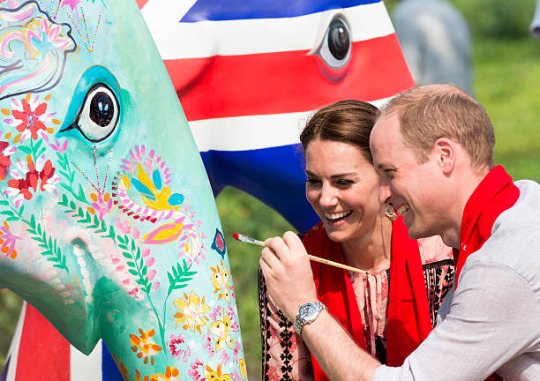
India (Day 4) - 13 April 2016
The Duke and Duchess of Cambridge visited the Kaziranga National Park in Guwahati, India, including:
Pan Bari Village
Centre for Wildlife Rehabilitation and Conservtion
Kaziranga Discovery Centre
(📷Getty Images)
#prince william#duke of cambridge#kate middleton#duchess of cambridge#british royal family#royal#april 2016#india2016
68 notes
·
View notes
Photo

13 April 2016 | Catherine, Duchess of Cambridge visits Pan Bari Village at Kaziranga National Park in Guwahati, India. (c) UK Press Pool/Getty Images
4 notes
·
View notes
Text
Clone Wars Things 5/7
S5:EP2: SAW GERRERA! I DIDN’T REALIZE SAW EVEN EXISTED OUTSIDE OF ROGUE ONE.
S5:EP2: The exasperated but dissappointed look Ahsoka gives when seh watches Lux teach Steela how to roll the droid disruptor.
S5:EP2: “It looks like an explosive.” “How can you tell?” *both droids blow up*
S5:EP5: They have flying beasts and Steela fell off a cliff and died?
S5:EP10: “Some of you may not survive.” “Is he looking at me? Why is he looking at me?”
S5:EP16: The way Obi-Wan lurches forward when Satine is first threatened.
S5:EP16: The Jedi who frowned on Anakin’s attachments and remained studious, calm, and observant when a fellow Jedi was almost mind controlled, the one who always knows what to say and makes jokes in the dace of danger is speechless, helpless, and heartbroken watching as the one he loves is killed. The once persistent and peaceful Duchess met her demise, merely as cannon fodder for Kenobi’s character development, but as the sufferings of her people, the weakness she’d been accused of, and all of her sorrows ended, they did not dissappear, but were transferred to the seemingly emotionless, now remorseful, always having the words to say, now saying none at all, always resilient, but now oh, so broken Master Kenobi, whose screams and gasps of disbelief I cannot distinguish from my own.
S5:EP18: Tarkin and Ahsoka foreshadowing Tarkin and Leia.
S5:EP18: “I believe you, Ahsoka.” “But no one else will.” and that was the moment my heart broke.
S5:EP18: Heartbroken Anakin and scared and confused little Ahsoka.
S5:EP20: Can I accuse the ENTIRE Jedi Council (especially Mace Windu) of leading the witness???
S5:EP20: Probably should’ve mentioned this sooner, but Asajj’s outfit is so fly!
S5:EP20: I FREAKIN CALLED IT BARIS YOU LYIN’ TRAITOR!
#clone wars things#star wars the clone wars#saw gerrera#ahsoka tano#lux bonteri#ahsokalux#steela gerrera#battle droids#mace windu#obi wan kenobi#duchess satine kryze#obitine#anakin skywalker#luminara unduli#tarkin#asajj ventress#bariss offee
70 notes
·
View notes
Text

Bona Sforza of Milán
Queen of Polan
Mother of Sigismund II and Anne of Poland
Duchess of Bari
4 notes
·
View notes
Note
are there any mw duchies at the moment?
there are ! it really depends on how deep you want to go into the politics of it. we’re after the duke or duchess of kaliningrad & northern island. otherwise, you could consider the following connections:
( mimi grimaldi ), the ( hailey clauson ) fc would like a ( half-sister/‘lady-in-waiting’ [18-25] ) with ( dove cameron, halston sage, daphne groeneveld, any fc ). the mun ( asks you to read this ) you to contact them before applying. [ The Duchess of Rethel ]
( natalia de marquis ), the ( hailey baldwin ) fc would like a ( mother ) with ( gisele bündchen, any fitting fc ). the mun ( requires ) you to read this before applying. [ duchess of norfolk ]
( elyse fredika zollern ), the ( bella heathcote ) fc would like a ( younger brother [ read this before applying. [ heir to the duchy of prussia, german noble]
( natasja magnusdottir ), the ( alicia vikander ) fc would like a ( half sister ) with ( brie larson, ay fitting fc ). the mun requires you to ( read this ) before applying. [ duchess of kópavogur ]
( geneviève demidova ), the ( lucy boynton ) fc would like a ( father [ 50+ ] ) with ( daniel craig, any suitable fc ). the mun ( requires ) you to contact them before applying. [ duke of yekaterinburg/anywhere in russia ]
( lisette du poitiers ), the ( sara sampaio ) fc would like an ( ex husband [ 31-34 ] ) with ( any male fc ). the mun ( doesn’t require ) you to contact them before applying. [ duke from hungary ]
( aslan baris osmanoğlu ) the ( kıvanç tatlıtuğ ) fc would like a ( best friend/right hand man ) with ( burak özçivit, aras bulut iynemli, çağatay ulusoy). the mun ( requires ) you to contact them before applying. [ duke of utp turkish duchy ]
( juliana de lusignan ), the ( demet özdemir ) fc would like a ( childhood friend / political ally ) with ( can yaman ). the mun ( requires ) you to contact them before applying. [ duke of northern cyprus ] more info

2 notes
·
View notes
Text

On Thursday, February 8, 1859, a glorious Italian spring morning, the Crown Princess approached her new country.
The roads leading to Bari were thronged with spectators who pushed and jostled one another in their effortys to welcome the young bride. Her name was on the lips of all; but no one spoke of her as the Princess of Bavaria or the Duchess of Calabria. With the familiarity which is characteristic of the people of southern Italy they used even before her arrival her Christian name only. They did not, however, call her Maria alone, for a number of her predecessors had borne that name. In Italy, to this day, she is always spoken of as "Maria Sophia".
Nobody as yet had seen her, but all talked about her with a familiarity and warmth such as they might have done had they known her very well. They praised her beauty, her winning manner, her stately bearing, and they spoke with admiration of her elegant dresses.
(...) Meanwhile there was bustle and excitement on board the Fulminante. The bride was standing in the middle of the deck in a costly travelling dress. She was this day perhaps more like her sister Elizabeth than ever. There were the same glorious, dark-blue eyes, the same abundant brown hair. She was not indeed as tall as the Empress of Austria, but her figure was as fine. The childishly innocent, at other times always bright expression, was to-day mingled with a touch of exprectant seriousness—a result partly of the fatigues of the journey, partly of the strong and unquiet feelings which naturally moved her at this moment. On the journey she had questioned Nina Rizzo and her new chamberlain about her future husband, as to his appearance and as to his behaviour towards his parents, his brothers and sisters, and his subordinates and she had not wearied of hearing stories of his childhood. On her naïve question as to wheter he was really as ugly as she had been told he was in Bavaria, both had done their utmost to reassure the youn Princcess. They had said that he was not ugly at all; and they told her of his kindness.
Tschudi, Clara (1905). Maria Sophia, Queen of Naples: A Continuation of “The Empress Elizabeth” (translation by Ethel Harriet Hearn)
#Francesco wasn't particularly good-looking but he still looked ok? I legit don't get why there's always so much emphasis in his looks#ludovika called him ugly once and now anytime he is mentioned in any work authors just have to comment on how unattractive he was#queen marie sophie of the two sicilies#francesco ii of the two sicilies#maria sophia queen of naples: a continuation of ´the empress elizabeth´ (1905)#historian: clara tschudi#historicwomendaily
46 notes
·
View notes
Photo

Victims of the Childbed - Beatrice d’Este, Duchess of Milan
Daughter of the prestigious d’Este family, ruling house of Ferrara. Consort to Ludovico Sforza, Duke of Milan as regent then in fact, one of the most powerful men in renaissance Italy. A great patron of art, literature, and learning as well as a capable political player with a career that was cut short at the age of only twenty-one.
Her full story below the cut:
On the 29th of June 1475, the second child of Duke Ercole I d’Este of Ferrara and Leonora of Naples quietly made her appearance into the world. The ducal couple had been expecting the birth of a son, as their first child had also been a girl, Isabella. Thus the birth of Beatrice d’Este was greeted with almost no fanfare. A year later Duchess Leonora did give birth to a son, Alfonso, who is best known for marrying Lucrezia Borgia as his second wife.
From her infancy, Beatrice was overshadowed by her older sister Isabella in their parents’ affections. She was, however, the beloved favorite of her maternal grandfather, King Ferrante of Naples. In 1477, Leonora brought Beatrice and her siblings to Naples for the celebration of Ferrante’s second marriage. The old king was enchanted by his two-year-old granddaughter, so much so that he had her remain at his court and effectively adopted her. The little girl was raised at her grandfather’s beautiful and highly cultured court for eight years. Ferrante doted on Beatrice as her parents doted on her bright sister Isabella. Beatrice’s upbringing in Naples allowed her to flourish as she may not have otherwise. She met artists and learned men whom she would encounter again during her short adult life. By the time she returned to Ferrara, she was on her way to becoming a real Renaissance woman.
The houses of d’Este and Sforza enjoyed a friendly relationship during Beatrice’s childhood. Her brother Alfonso was betrothed to Anna Sforza, daughter of Bona of Savoy and the assassinated Duke Galeazzo Maria Sforza of Milan, when both were still in their infancy. A struggle for control of the Duchy of Milan ensued soon after the assassination of Galeazzo, which left his seven-year-old son, Gian Galeazzo, as Duke. Bona of Savoy acted as regent for her son but was soon fighting Galeazzo’s younger brother Ludovico for the regency. Ludovico would ultimately win the fight and rule Milan as regent for thirteen years. Shortly before this victory, in 1480, Ludovico became a suitor for the hand of Duke Ercole’s daughter Isabella. Ercole explained that Isabella was already betrothed to the heir of the Marquess of Mantua. In her stead he offered Ludovico the hand of five-year-old Beatrice, which was accepted.
In 1485, Beatrice was returned to Ferrara to continue her education alongside Isabella in preparation for their marriages. We do not know if Beatrice matched her sister’s impressive intellectual accomplishments, but she certainly shared her mother’s love of art and perhaps her father’s love of music. Like most noblewomen of the day, Beatrice was also educated in dancing, languages, and fine needlework.
Beatrice left Ferrara for Pavia on December 29, 1490 in the company of her mother and brother Alfonso. On January 17, 1491, fifteen-year-old Beatrice was married to thirty-eight-year-old Ludovico Sforza in a double ceremony with Alfonso and Anna Sforza. Beatrice’s bridegroom, nicknamed “Il Moro” for his dark looks, was among the wealthiest men in Italy and proved himself to be charming and courteous to her and her relations. The magnificent wedding festivities were orchestrated by Leonardo da Vinci.
Upon her marriage, Beatrice officially became Duchess of Bari, but at this point Ludovico had all but totally usurped Gian Galeazzo as Duke of Milan. She was well-received in Milan and was known for her charm and vivacity. Ludovico spared no expense on his young bride, and Beatrice was delighted by pageants, feasts, and tournaments in the early days of her marriage. She soon settled into her role as duchess, for which she had been thoroughly trained. Beatrice surrounded herself with artists, most notably da Vinci and Bramante, as well as poets and learned men. During her time as consort, Ludovico’s court reached new heights of culture and at times extravagance. Beatrice also did her duty as duchess both physically and politically. In early 1493 she bore a son, Massimiliano, followed by another boy, Francesco, two years later. A year after her marriage, Beatrice acted as Ludovico’s ambassador to Venice in an attempt to have him acknowledged as Duke of Milan. In 1494 when Gian Galeazzo died under suspicious circumstances, Ludovico and Beatrice were officially made Duke and Duchess. Beatrice also took part in the peace congress of Vercelli while trying to ease the relationship between the Italian lords and Charles VIII of France. Even at the age of twenty, Beatrice showed great promise for her future career.
Beatrice continued to be the greatest supporter of her husband’s interests. Ludovico relied much on his wife’s strength and political ability during his conflicts with Charles of France. In 1495, he had the heads of the families of Milan swear fealty to Beatrice as regent of Milan and guardian of their sons in the event of Ludovico’s early death. Beatrice continued to be a patron of the arts and learning. In mid-1496 she wrote to her sister that she hoped to expect a third child in the new year. She was indeed pregnant again. At the Christmas festivities that year, Beatrice was said to have been melancholic and tearful, which was later thought to have been an ill omen. On January 2, 1497, Beatrice appeared in public in seemingly good health, but by that evening a difficult labor had begun. At eleven o’clock she gave birth to a stillborn son. At half past midnight, Beatrice herself died. Grief hit Milan and its Duke hard and suddenly.
Ludovico’s grief was intense. In a letter to his brother-in-law, the Marquess of Mantua, he wrote that Beatrice’s sudden death “has filled me with bitter and indescribable anguish, so much so that I would rather have died myself than lose the dearest and most precious thing that I had in this world.”
Beatrice was laid to rest in the Certosa di Pavia, where she was joined by Ludovico eleven years later. The marble effigy atop her tomb depicts the fashionable young woman whose cleverness, patronage, and tastes helped build Milan into a Renaissance city.
Source: Beatrice d'Este, Duchess of Milan, 1475-1497. A study of the Renaissance by Julia Cartwright Ady
#I decided to just do a read more because this ended up being sooo long#but I hope someone reads it#since I did work really hard on it believe it or not#and yes that's pretty much the only decent resource for her life#Beatrice rlly has been eclipsed by her sister#the documentation isn't terrible but it's not nearly as plentiful as Isabella's#Beatrice d'Este#duchess of Milan#house of Sforza#Italian renaissance#victims of the childbed#art#my art
129 notes
·
View notes
Photo

👑 The Duchess of Cambridge visits Pan Bari Village in India's Kaziranga National Park on April 13, 2016.
📸 Getty Images
88 notes
·
View notes
Text
Meghan Markle agiye kwishyurra na Associated Newspapers Ltd mu rubanza yaregagamo Mail on Sunday
Meghan Markle agiye kwishyurra na Associated Newspapers Ltd mu rubanza yaregagamo Mail on Sunday
Meghan Markle, Duchess of Sussex, Umufasha wa Prince Harry, yemeye “impozamarira y’amafaranga” azahabwa n’ikinyamakuru Mail on Sunday mu rwego rwo kurangiza intambara y’amategeko bari bamazemo imyaka itatu.
Ikinyamakuru Mail on Sunday cyasohoye itangazo ku rupapuro rw’imbere cyemera ko Meghan Markle yatsinze urubanza yakirezemo gukoresha ibaruwa yandikiye se umubyara atabitangiye…

View On WordPress
0 notes